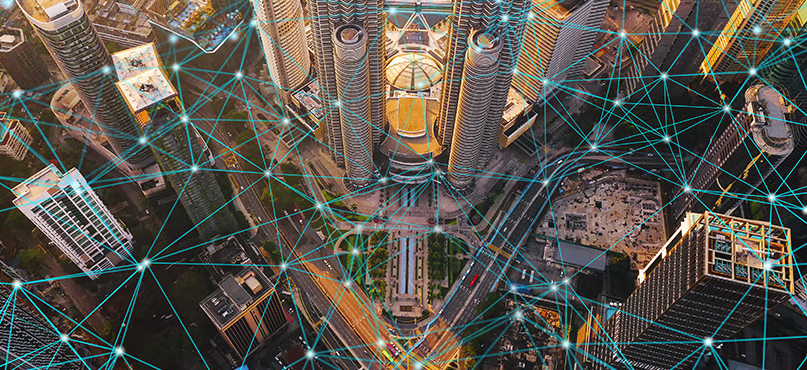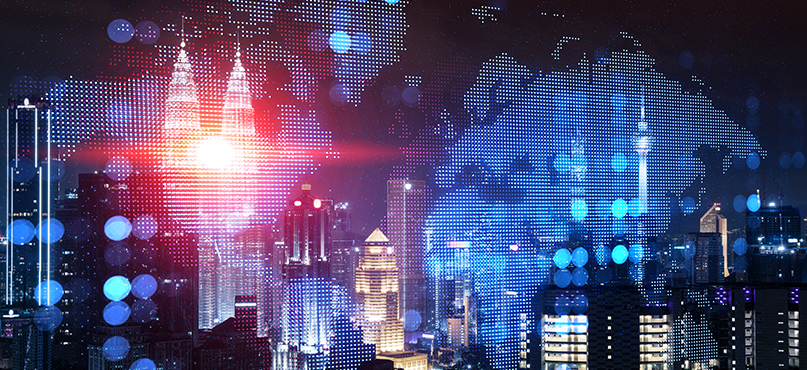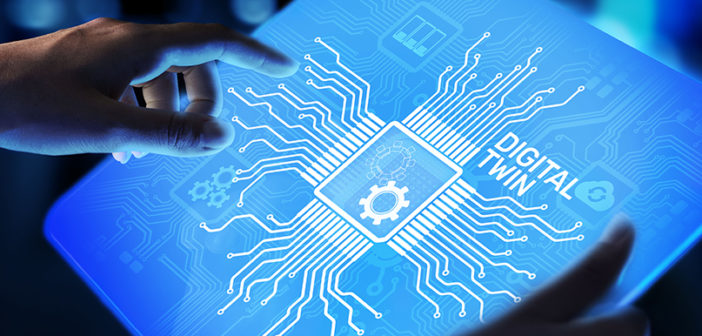A digital twin – or a digital reality as we also refer to it at Hexagon – is a replica of something in the physical world created in a digital form. It’s a no-risk clone of a physical object or environment, where you can learn and experiment with ‘what-if’s. Our customers come from a wide range of industries so, our technology is used to create and work with digital twins of anything from an archaeological site to a manufacturing plant, oil refinery or even an entire city.
The idea of creating a twin for testing out ideas isn’t a new one; a famous early example of twin technology was the NASA Apollo 13 project in 1970. The team created pairs (twins) of technology to accelerate development and manage critical projects. By using and creating a “twin” on earth, NASA engineers were able to test different scenarios before putting them into reality with astronauts in space. This process was credited for bringing the Apollo 13 crew back to earth safely.
One of many differences now is that a digital twin can be kept up-to-date with real-time information from sensors and artificial intelligence. These innovations allow you to understand the current state of the physical thing you are monitoring, discover potential challenges and model ways to be more efficient.
 Why create a digital twin?
Why create a digital twin?
Digital twins help you understand the physical world’s state, respond quickly to changes and improve business operations. They are excellent for running simulations and exploring hypothetical situations before investing money and resources into new projects. The lessons learned from a digital twin simulation in the virtual space can be applied to the original system in the physical space with less risk and investment than testing in the real world, maximising the investment return.
Our mission at Hexagon is to empower our customers to transform and manage change by leveraging digital twins’ value to enable digital transformation. We focus on the value between the virtual product and the physical product – not just creating a copy. Although the digital twin is the replica of the physical world, it is the connection, difference or changes between the twins which create the drive for a scalable digital transformation.
Reality capture – the process of collecting data to create or update the digital twin – bridges the physical and digital virtual worlds. By regularly or constantly updating the digital twin, this virtual entity can keep up with and exist simultaneously with the physical entity. Through regular comparisons or by using autonomous algorithms, you can find differences and valuable ways to improve.
 How do you create a digital twin?
How do you create a digital twin?
To start with, reality capture is how we digitise the real world and create digital replicas. Reality capture technology is, in fact, several complementary technologies that let you view and paint the world in 3D. 3D laser scanning solutions capture data from mobile, airborne or terrestrial platforms while you stand, walk or even drive. Once data is captured, it is processed, managed and then delivered in the model required. Making the entire process of reality capture – from ‘capture to complete’ – simple and efficient are goals that drive us. To enable everyone to harness the value of reality capture technology, we have invested in automating workflows in every step of the process.
Depending on the objective, different software applications turn reality captured data into digital twins. For example, Hexagon provides integrated Project Twin, Operational Twin and Situational Awareness solutions for the manufacturing and process industries. The overall digital twin is the glue that connects these enterprise solutions and their data on one platform. A digital twin can be built gradually using Hexagon solutions in different stages to prevent barriers to adoption.
The first stage starts with a basic set of structured data and documents defining the facility configuration, designed by engineering teams in the Project Twin. The second stage connects this intelligent data to 2D schematics, 3D models or laser scans, allowing for more intuitive viewing and navigation. This begins to unlock the benefits of weaving engineering, operations and maintenance information in an Operational Twin.
The third stage further enhances the Operational Twin with increased interoperability by exchanging information and providing links to other information sources in the operations landscape, such as asset performance, data historian, maintenance management and real-time data solutions. The fourth stage is where the significant digital transformation business benefits will be realised. The asset owners and operators can leverage a digital twin to manage value-added work processes, such as human procedures, inspections, integrated safe systems of work and management of change.
 What’s next for digital twin technology?
What’s next for digital twin technology?
While already widely adopted in the construction and infrastructure industry, digital twins have huge potential in other sectors. In the past, the surveying technology used to create such scans has meant that this has been reserved exclusively for major infrastructure investment decisions, but with increasingly accessible scanning technology, new use cases are emerging.
Hospital management is the area where disaster response and the construction sector converge. With the growing number of digital twin projects run at a local authority and government level, we can expect to see more opportunities for healthcare management to use digital models to plan and allocate resources.
As many governments develop digital twins of cities and even nations for infrastructure development, this opens up further possibilities to use this data for virtual tourism. These models enable us to explore not just a landmark but to wander through the streets of an entire city. Furthermore, whilst the heritage sector slowly recovers from major challenges with the closures of galleries, museums and historic venues worldwide, the hope is that digital twin technology and its innovative approaches help open up these spaces to new audiences and aid the recovery of the sector.
For mature digital twin industries, Smart Digital Reality is the final evolution of the twin process. This is where the value of information is autonomously extracted from the digital twin and is continuously layered over it, fuelling continuous improvement. To bring in an analogy with completely different technology, it’s similar to Spotify learning your music tastes and proposing a playlist without being asked. Smart Digital Reality looks for points of interest or changes considered relevant to a particular industry or application and updates or proposes correlations.
 Juergen Mayer
Juergen Mayer
President Reality Capture
Geosystems Division
For a deep dive into digital reality solutions, join us at HxGN LIVE Global, Hexagon’s flagship global conference.
Visit https://hexagonppm.com to find out more about our digital twin solutions.
Watch our on demand webinar: Advancing the Digital Twin: A Q&A with GM Reality Capture Supervisor John Brown
Read Digitalisation of our physical world through reality capture technology: Part one and Part two.














